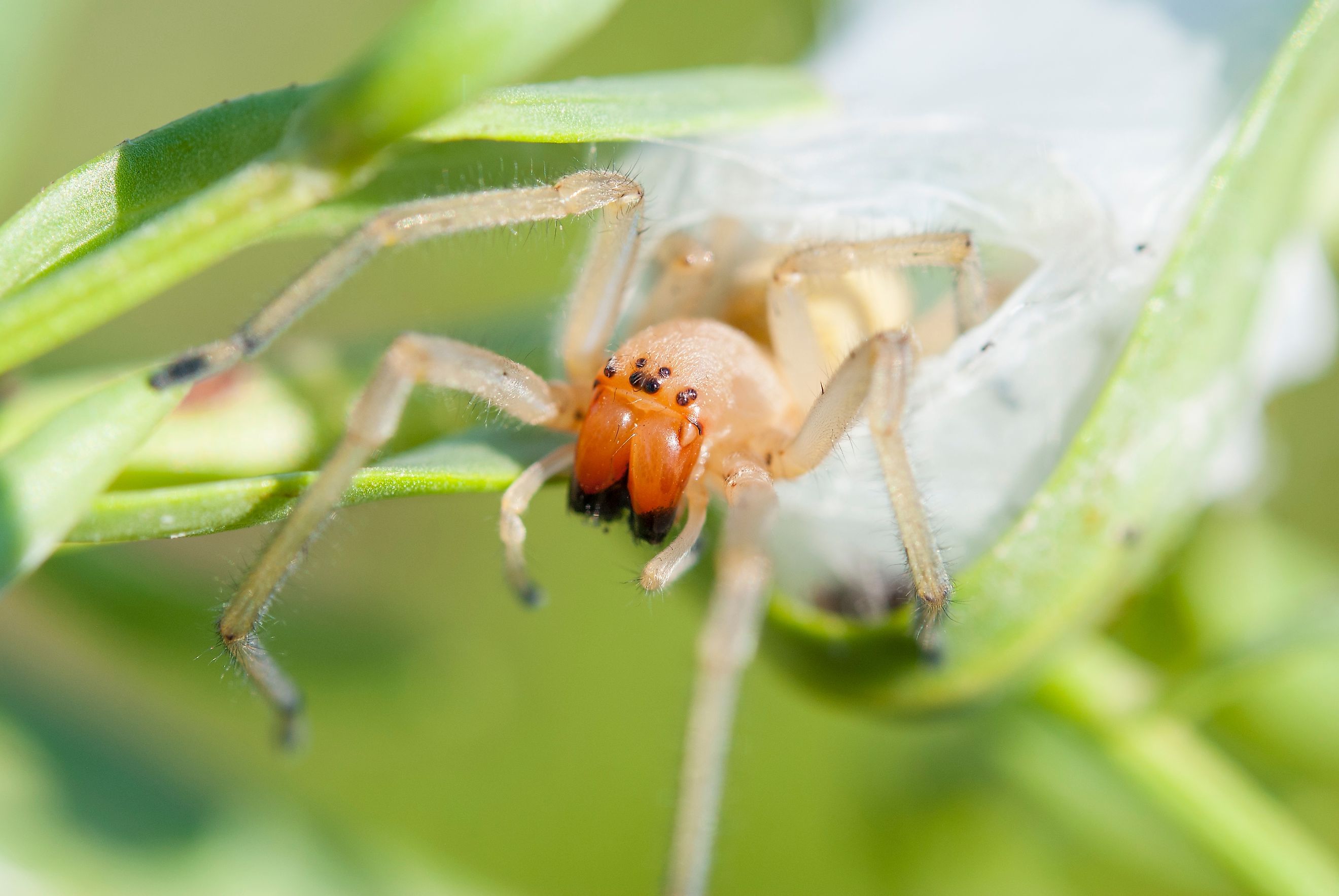
8 Most Venomous Spiders in California
California is home to a diverse array of spider species, many of which are venomous to varying degrees. While most spiders are harmless and even beneficial in controlling pest populations, a few species can pose risks to humans due to their venomous bites, including the infamous Western black widow, various recluse species, and other spiders like the brown widow and brown recluse. Understanding where these spiders live, their behavior, and how to manage bites is crucial for staying safe while appreciating their role in the ecosystem.
Western Black Widow (Latrodectus hesperus)
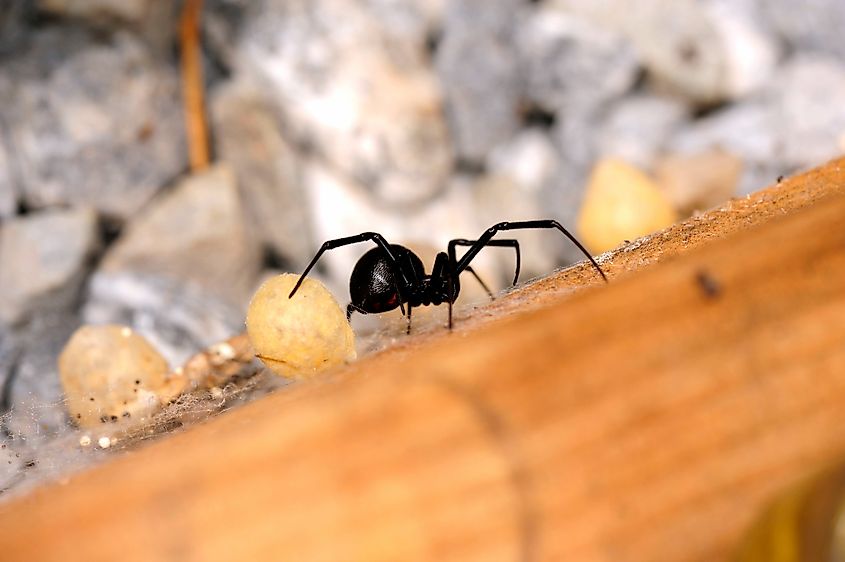
Western black widows are commonly found throughout California in urban, suburban, and rural areas, particularly in dry, sheltered locations such as garages, sheds, and under debris. These spiders build irregular webs near ground level in areas with minimal human disturbance. You can spot them by their shiny black bodies, round abdomens, and distinctive red hourglass markings on the underside of the females. Western black widows are a nocturnal species, primarily feeding on insects like flies, beetles, and other small arthropods that get caught in their webs. They are generally non-aggressive and will retreat if disturbed, though females may bite if provoked while guarding their eggs.
The venom of the Western black widow contains a neurotoxin called latrotoxin, which can disrupt nerve signals and cause severe muscle pain, cramps, and localized sweating. Bites can result in symptoms such as nausea, vomiting, and elevated blood pressure. In severe cases, symptoms can escalate to breathing difficulties or paralysis. If bitten, immediate medical attention is recommended, particularly for children, the elderly, or those with pre-existing conditions. Applying ice to the bite area and keeping the affected limb elevated can help manage symptoms while awaiting medical treatment.
Desert Recluse (Loxosceles deserta)
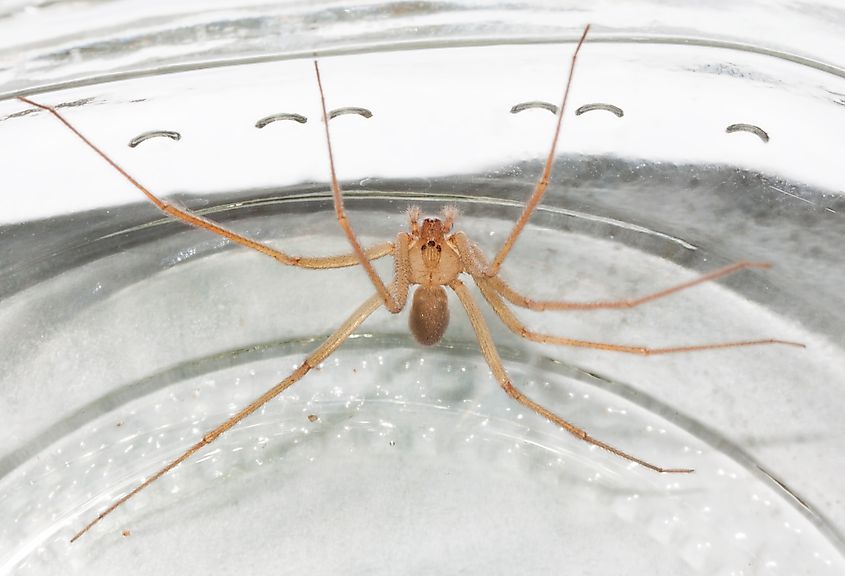
The desert recluse is typically found in the arid climates of Southern California, preferring dry, undisturbed areas such as woodpiles, rock crevices, and storage spaces. Unlike other recluse species, it thrives in outdoor environments, although it may enter homes in search of shelter. Identifying a desert recluse can be tricky due to its plain brown appearance, but a distinguishing feature is the violin-shaped marking on its back. These spiders are shy, nocturnal hunters, feeding on small insects such as crickets, ants, and other arthropods. They are reclusive by nature and will only bite when directly threatened.
The venom of the desert recluse is cytotoxic, meaning it can destroy tissues at the site of the bite. Initially, the bite may feel painless but can develop into a painful, necrotic lesion over the course of a few hours. Symptoms may include redness, swelling, and the development of an open ulcer, sometimes accompanied by fever, chills, or nausea. Severe cases can lead to systemic effects, though this is rare. Treatment typically involves cleaning the wound, applying ice, and seeking medical attention for potential surgical intervention if tissue damage becomes significant.
Chilean Recluse (Loxosceles laeta)
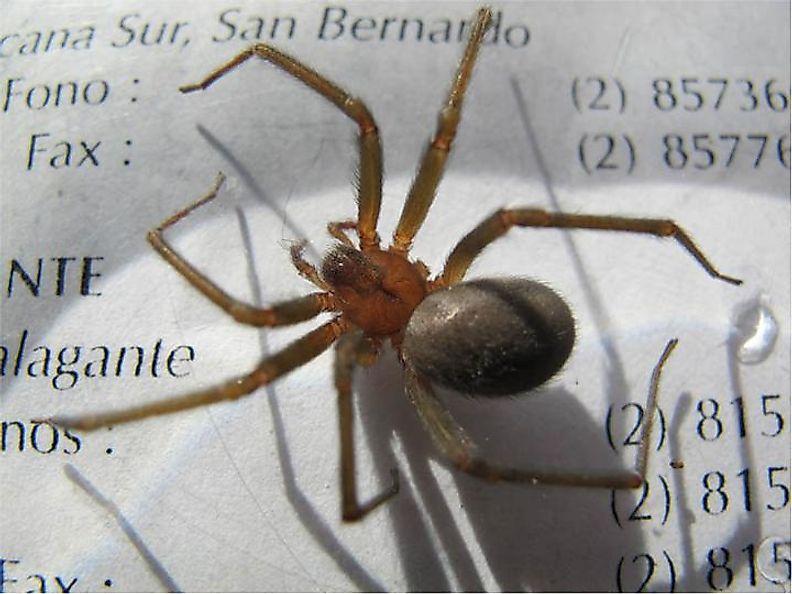
The Chilean recluse, originally native to South America, has made its way into parts of California, particularly in densely populated areas such as Los Angeles. These spiders prefer dark, secluded locations like attics, basements, and behind furniture, often residing in human dwellings where they remain undisturbed. Similar to other recluse species, the Chilean recluse has a violin-shaped marking on its back, though it is slightly larger than the desert recluse. They feed primarily on small insects and are nocturnal hunters, rarely coming into contact with humans unless their habitat is disturbed.
The venom of the Chilean recluse is known for its potency, being both cytotoxic and hemolytic, which can destroy red blood cells and tissue around the bite area. Bites can lead to large necrotic lesions and, in rare cases, systemic symptoms such as kidney failure, seizures, or even death if left untreated. Early symptoms include pain, swelling, and redness around the bite, followed by blistering and ulceration. Immediate medical attention is crucial, and treatments may involve wound care, antibiotics, and in severe cases, surgery to remove necrotic tissue.
Brown Widow (Latrodectus geometricus)
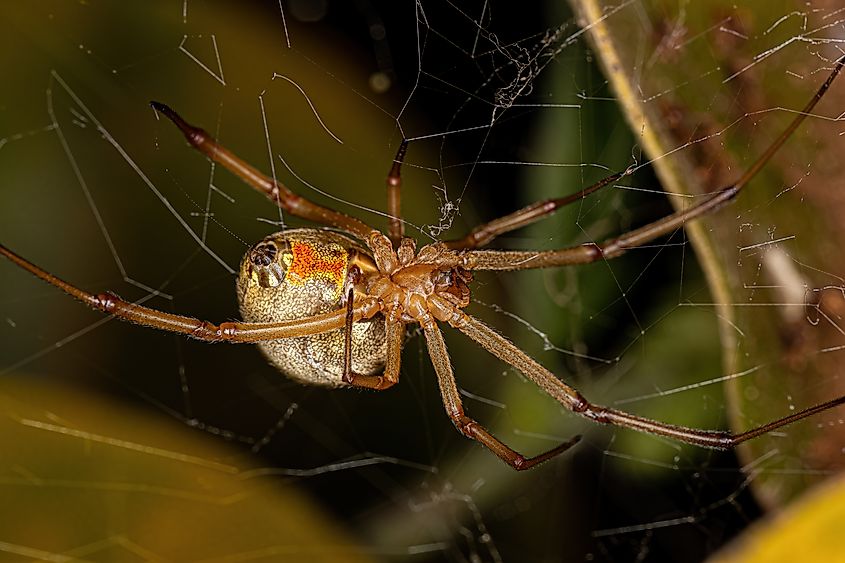
The brown widow spider is found throughout California, especially in urban environments, often in sheltered, low-traffic areas like the underside of outdoor furniture, inside garages, and under eaves. Unlike its cousin, the black widow, the brown widow tends to be more visible during the day. You can identify the brown widow by its lighter brown or tan body with orange or yellow hourglass markings underneath its abdomen. Brown widows spin irregular, sticky webs and primarily feed on insects such as flies and mosquitoes. Though they are non-aggressive, they will bite if threatened, especially when protecting their egg sacs.
The venom of the brown widow is less potent than that of the black widow, though it is still neurotoxic. Symptoms of a bite can include localized pain, muscle stiffness, and cramping, which may last a few hours or days. More serious symptoms like nausea, sweating, and elevated blood pressure can also occur, but these are rarer and less severe than in black widow envenomation. While most bites do not require medical intervention, applying ice to the area and seeking medical advice is recommended to manage pain and discomfort. Severe cases may necessitate antivenom or hospital treatment.
Baja Recluse (Loxosceles palma)
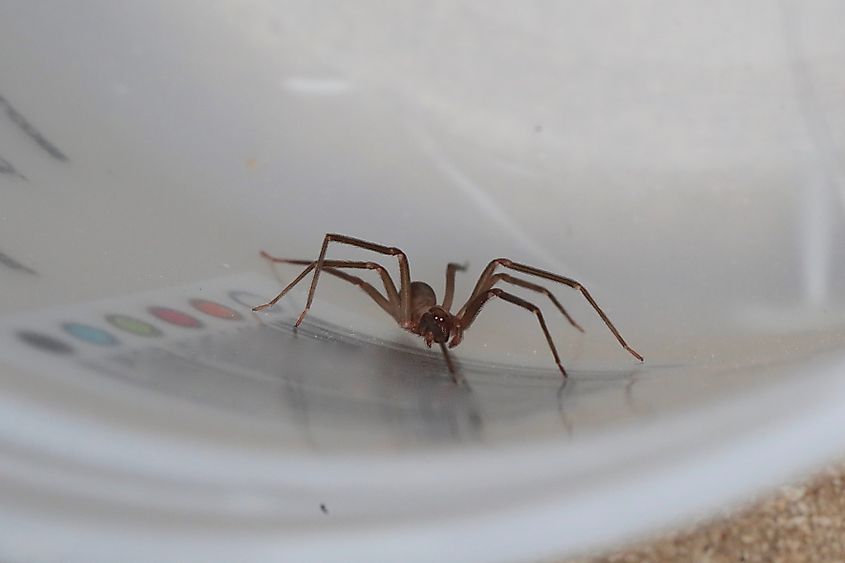
The Baja recluse, a close relative of the desert recluse, is found in the southern regions of California, particularly near the Mexican border. This species prefers dry, undisturbed environments such as beneath rocks, inside woodpiles, or even inside homes. Like other recluse species, the Baja recluse has a violin-shaped marking on its back, although it can be difficult to distinguish from other recluse spiders due to its similar size and coloration.
The venom of the Baja recluse is highly cytotoxic, meaning it can cause significant tissue damage at the site of the bite. Symptoms can include pain, swelling, and the formation of necrotic lesions that may take weeks to heal. In some cases, systemic effects such as fever, muscle pain, and nausea may occur. Severe reactions are rare but can include kidney failure or secondary infections. Immediate wound care and medical treatment are recommended to prevent complications, and in serious cases, surgery may be required to remove damaged tissue.
Yellow Sac Spider (Cheiracanthium inclusum)
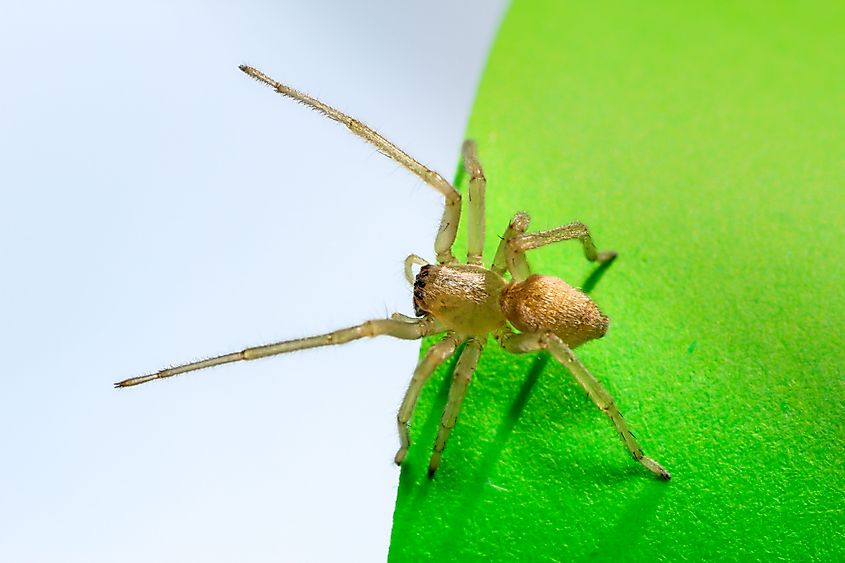
Yellow sac spiders are common throughout California, particularly in homes and gardens where they hide in small silk sacs during the day and become active at night. They are often found in the corners of walls, ceilings, or outdoor vegetation. These small, pale yellow spiders are around a quarter of an inch long and have long legs that allow them to move quickly. Yellow sac spiders are hunting spiders, preying on insects and other small arthropods, and do not rely on webs to capture food. Their movements and pale color can make them easy to spot indoors.
The venom of the yellow sac spider is cytotoxic, capable of causing localized tissue damage, though their bites are usually mild compared to those of the recluse spider. Symptoms of a bite include a burning sensation, redness, and swelling, sometimes followed by the development of a small ulcer or blister. More serious reactions, such as fever or muscle aches, are rare but possible. Bites are often misidentified as brown recluse bites due to similar symptoms. Treatment involves cleaning the wound, applying ice, and seeking medical attention if symptoms worsen or do not heal within a few days.
Brown Recluse (Loxosceles reclusa)
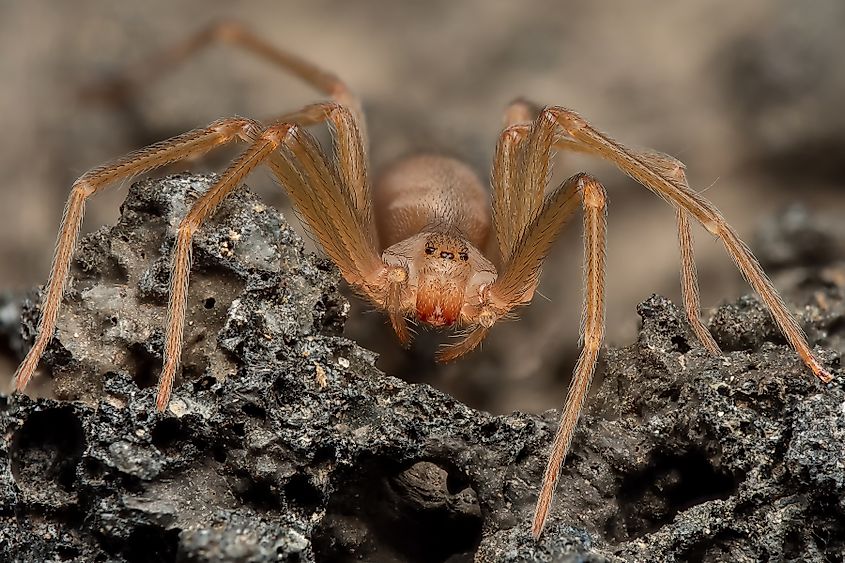
Though originally native to the southeastern United States, the brown recluse has also been reported in parts of California. These spiders are often found in dark, undisturbed areas like basements, closets, and attics, particularly where they can remain hidden. Like its relatives, the brown recluse is identified by the violin-shaped marking on its back and its plain brown appearance. They are nocturnal hunters, feeding on small insects, and they typically avoid human contact unless provoked.
The venom of the brown recluse is notorious for causing necrotic wounds at the bite site. Initially, bites are often painless but can progress into painful ulcers, with symptoms such as redness, swelling, and eventual tissue breakdown. In rare cases, systemic symptoms like fever, chills, or nausea may develop. Immediate medical attention is essential to manage the wound and prevent further tissue damage. Treatment may involve wound care, antibiotics, and in severe cases, surgical removal of necrotic tissue.
Orb Weaver Spiders (Araneidae family)
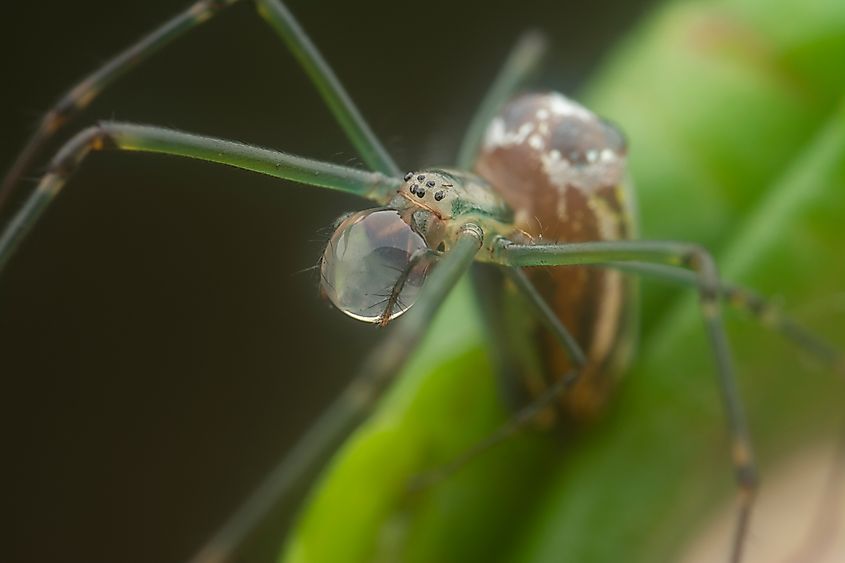
Orb weaver spiders are widely distributed across California, often seen in gardens, forests, and around human dwellings where they build their characteristic spiral, wheel-shaped webs. These spiders are typically active during dusk and night, waiting at the center of their webs to catch flying insects such as moths, flies, and mosquitoes. Orb weavers come in a variety of colors and sizes, with some of the larger species having brightly colored abdomens. The garden spider and the golden orb weaver are among the most common types found in California, and their intricate webs can often be seen in the early morning dew.
While orb weavers possess venom, it is not dangerous to humans and is used primarily to immobilize their insect prey. Their bites are rare, occurring only if they are accidentally handled, and generally result in mild, localized pain, swelling, and redness, akin to a bee sting. Symptoms typically resolve within a few hours to a day. If bitten, washing the area with soap and water and applying ice can reduce discomfort. Due to their beneficial role in controlling insect populations, orb weavers are considered harmless and are often encouraged in gardens and natural environments.
In Summary
Though venomous spiders in California have garnered a fearsome reputation, most bites are preventable with proper caution. These spiders typically avoid human contact and will only bite when provoked or threatened. By learning to recognize their habitats and behaviors, Californians can coexist with these arachnids while minimizing the risk of harmful encounters. In the event of a bite, seeking prompt medical attention is the best course of action, especially for the more dangerous species. With respect for their role in nature and knowledge of proper precautions, the presence of these spiders can be managed safely.











